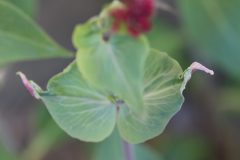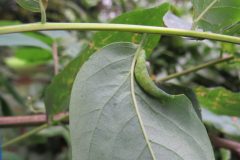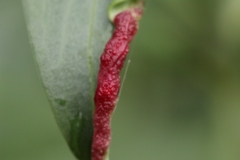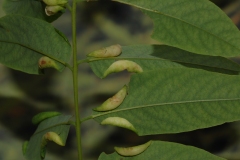Galls in the Garden
In 2017 Pip Seccombe invited me to look in her garden at a possible gall rolling the edge of a leaf of Red Valerian Centranthus ruber. Pip had been given the plant by a friend in Cambridgeshire. We came to the conclusion it was caused by a psyllid Trioza centranthi. This was probably the first Yorkshire record. Psyllids are bugs which suck the sap of different plants and some of them cause the formation of galls. They are often referred to as jumping plant-lice and tend to be host-specific, each plant-louse species only feeds on one plant species or feeds on a few closely related plants. In Cecidology Autumn 2016 , the journal of the Plant Gall Society, Brian Spooner an expert on plant galls and fungi indicated that Trioza centranthi was often found by the south coast or nearby, although he indicated there had been a few records from Worcestershire. In recent years this gall has become common in our gardens, rolling the leaves of Red Valerian. It is now common in my garden in Skellow. Friends have discovered it in the Darlington area. Please check the Red Valerian in your garden or neighbourhood and let me know if the leaves are galled.
I am also wondering how common is a midge gall Obolodiplosis robiniae which rolls the leaves of False Acacia, Robinia pseudacacia . False Acacia is a striking popular tree in gardens. The gall is a native of North America it was first recorded in England in 2007. In Suffolk in 2010 the gall was abundant but in more recent years seems to have become absent. I first saw the gall in Elmfield Park in 2014. Recently I am sure I saw the first stages on leaves of False Acacia in Sandall Park. I wonder how common it may be locally.



